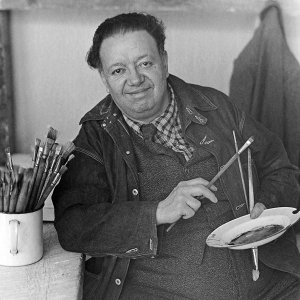
Diego Rivera
Diego Rivera (1886-1957) was one of the most important muralists of the 20th century. Together with Alfaro Siqueiros and José Clemente Orozco, he gave expression to an authentic Mexican art through his imposing works of art, which can be seen in the most significant buildings in Mexico City.
A provocative and troublesome artist, throughout his life he attracted controversy and protest, but also the interest of American patrons, including Henry Ford and Nelson Rockefeller, who gave him the opportunity to create some controversial murals in the United States.
A provocative and troublesome artist, throughout his life he attracted controversy and protest, but also the interest of American patrons, including Henry Ford and Nelson Rockefeller, who gave him the opportunity to create some controversial murals in the United States.
Author's books
La mia arte, la mia vita
Diego Rivera
pages: 204 pages
A legendary figure of Mexican muralism, Diego Rivera was many things: a friend of Picasso, an unrepentant womanizer and insatiable lover, a fervent Communist, soon thrown out of the Party, and a self-styled revolutionary artist. In the retelling of some of the salient episodes of his life, collected and written down by the journalist Gladys March,
